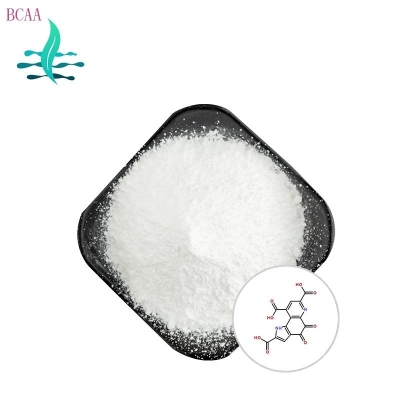-
Categories
-
Pharmaceutical Intermediates
-
Active Pharmaceutical Ingredients
-
Food Additives
- Industrial Coatings
- Agrochemicals
- Dyes and Pigments
- Surfactant
- Flavors and Fragrances
- Chemical Reagents
- Catalyst and Auxiliary
- Natural Products
- Inorganic Chemistry
-
Organic Chemistry
-
Biochemical Engineering
- Analytical Chemistry
-
Cosmetic Ingredient
- Water Treatment Chemical
-
Pharmaceutical Intermediates
Promotion
ECHEMI Mall
Wholesale
Weekly Price
Exhibition
News
-
Trade Service
Isoscabertopin, also known as Compound 5, is a chemical compound that is widely used in the pharmaceutical and chemical industries.
This compound is synthesized through a series of chemical reactions, which involve several intermediate products.
The upstream and downstream products of Isoscabertopin have a significant impact on the overall production process, as well as on the final product’s quality and cost.
In this article, we will explore the upstream and downstream products of Isoscabertopin, and how they contribute to the overall production process.
Upstream Products
The upstream products of Isoscabertopin are a series of intermediate chemicals that are synthesized through a complex process.
These intermediate products include isoscaline, isocryptopine, and isoduloxin, among others.
The synthesis of these intermediate products involves several steps, which include the preparation of raw materials, the selection of appropriate reagents and catalysts, and the optimization of reaction conditions.
Each step in the synthesis of these intermediate products must be carefully controlled, as even minor variations can affect the quality and yield of the final product.
In order to ensure consistent quality and yield, it is important to carefully monitor and control the synthesis of the upstream products of Isoscabertopin.
This may involve the use of advanced analytical techniques, such as nuclear magnetic resonance (NMR) spectroscopy and high-performance liquid chromatography (HPLC), to monitor the purity and identity of the intermediate products.
It may also involve the use of process analytical technology (PAT) tools, such as online analytical reactors, to monitor the performance of the reaction itself.
Downstream Products
The downstream products of Isoscabertopin include several pharmaceutical and chemical products, such as anti-inflammatory drugs, antidepressants, and antipsychotic medications.
These products are synthesized through a series of chemical reactions that involve the transformation of the intermediate products into the final product.
The selection of the specific reaction conditions and the use of appropriate catalysts and reagents are critical to ensure the quality and yield of the final product.
One of the key challenges in the downstream processing of Isoscabertopin is the purification of the intermediate products.
This may involve the use of various chromatography techniques, such as gel filtration and ion exchange, to remove impurities and to ensure the purity of the final product.
In addition, the final product must be stabilized and formulated in a way that ensures its stability and shelf life.
Cost and Sustainability
The cost and sustainability of the production process are critical factors in the overall success of a chemical enterprise.
The production of Isoscabertopin involves several steps, each of which must be carefully controlled to ensure consistent quality and yield.
In addition, the use of advanced analytical tools and PAT tools can help to optimize the production process and to minimize waste and rework.
One of the key challenges in the production of Isoscabertopin is the cost of the raw materials and intermediates.
The price of these materials can vary significantly, depending on the supplier and the quality of the material.
In addition, the cost of energy and other inputs, such as labor and equipment, can also have a significant impact on the overall cost of production.
Sustainability is another critical factor in the production of Isoscabertopin.
The use of environmentally friendly technologies and practices can help to minimize the impact of the production process on the environment.
For example, the use of renewable energy sources, such as solar and wind power, can help to reduce the carbon footprint of the production process.
In addition, the use of closed-loop systems and the recycling of waste materials can help to minimize the amount of waste generated during production.
Conclusion
The upstream and downstream products of Isoscabertopin play a crucial role in the overall production process.
The synthesis of the intermediate products






